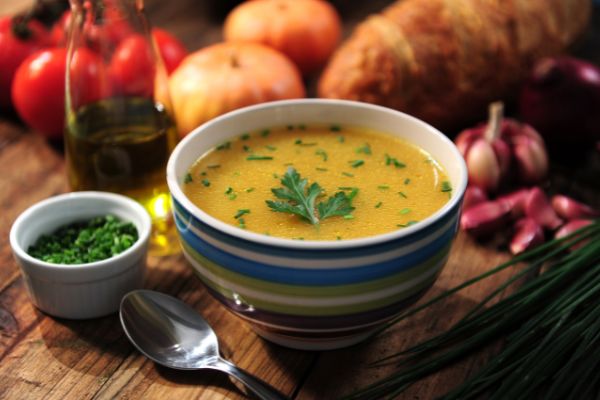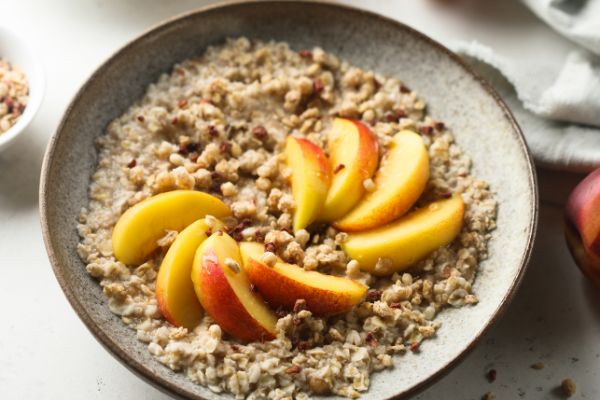10 Healthy Meal Planning Tips for Elderly Patients

One of the key risk factors with elderly patients is malnutrition. It can be seen in hospitals, in residential care, and even in the community. The incidence of malnutrition ranges from 12% to 50% among the hospitalized elderly population and from 23% to 60% among institutionalized elderly.
Poor nutrition in older adults is compounded by many factors. As the body ages, medical factors may develop. The most common are loss of appetite and loss of taste and smell. For a moment, imagine a deliciously sizzling steak meal in front of you having no taste and no aroma. What would be a tasty meal for normal folks becomes bland and unappetizing for the elderly.
The following are some of the medical factors associated with poor nutrition:
- Diminishing appetite
- Poor condition of teeth (dentition)
- Difficulty swallowing (dysphagia)
- Loss of taste and smell
- Gastrointestinal problems
- Respiratory problems
- Infections
- Development of physical ailments like arthritis
- Neurological disorders
- Pain from above disorders
And then, of course, we have non-medical factors like loneliness or poverty. Also, some seniors do not have the support they need to ensure that they have access to healthy meals.
If you are taking care of an elderly patient, here are some tips you can take inspiration from in developing healthy meal plans.
Disclaimer: Please do note that these tips are more for nurses of elderly people who are in relatively good health. If your patient is further along in a disease that makes feeding a major hurdle, there are more specific plans for such. Also, always check for individual allergies as we mention a lot of allergens below.
1. Go for nutrient dense foods like soups and smoothies

If your patient tolerates soups and smoothies well, add more of these to your meal plans. Soups and smoothies are rich in fiber, very nutritious, and can fill up a person very well.
Soups are an amazing comfort food. They are hearty and can be made with a wide variety of delicious fresh ingredients. They can even be served hot or cold depending on the season.
Smoothies are also very versatile. You can make interesting blends from fresh fruit and vegetables and even add in other ingredients to bring your smoothies to another level. Some ideas are cacao nibs, soft or pounded nuts, peanut butter, yoghurt, and so on.
You can find recipes for soups, smoothies, and many other excellent recipes for the elderly here.
2. Sneak in some hydration
Elderly folks are in danger of dehydration. It’s not known exactly why, but older adults experience a reduction in thirst. By the time they notice that they are thirsty, they are already in the early stages of dehydration.
If your patient is resistant to drinking often, you can sneak in some hydration by adding soups, smoothies, and natural juices into their meal plans.
More pro-tips:
- Little sips are best to prevent bloating and having to go to the bathroom every time.
- If you or their family can get them a pretty or customized mug or tumbler, go for it! It will make drinking a lot more enjoyable.
3. Prioritize high-protein foods
Add in eggs, nut butters, slices of tuna and chicken, tofu, and cottage cheese. Elderly patients often have difficulty eating, chewing, and digesting meat so slide in some protein alternatives. These can be easily paired with pasta, bread, rice, and even fruits and vegetables. They’re ideal choices because they are very easy to purchase from stores, easy to prepare, and best of all, are very flavorful even for waning taste buds.
Older adults need at least 20 grams every time they eat.
4. Make sure to add fish
Fish is an amazing source of vitamins and nutrients. It’s easy to chew and break down too, even for patients wearing dentures. It’s also easy to prepare as it only takes a few minutes to prepare and cook. It can also be frozen, and you can make single serve meals with fish as the main.
Regular consumption of fish reduces the risk for heart disease, stroke, dementia, and macular degeneration.
4. Add fat, and sweet and salty flavors
Caregivers of elderly folks often complain of how finicky their seniors become when it comes to food. The reality is that for them, how their food tastes has literally changed. Sour and bitter food becomes even more sour and bitter. Even foods that we won’t normally say taste bitter may taste bitter for them.
A cheat would be to add more menu items that are either sweet or salty so they can mask the sour and the bitter tastes. Fat also works the same way. For example, adding cream to a pasta recipe or to a cup of coffee often improves the taste for an elderly patient.
5. Consider frozen foods
If your patient is living alone, is living with busy family members, or is in assisted living, work in frozen foods into your meal plans. For example, you can add frozen meatballs, fish fillets, casseroles, stews, and pies. They can be stored in single-serve containers so that it’s just a simple matter of thawing food and popping it into the microwave.
6. Avoid foods that are hard to chew and break down
Elderly patients often suffer from dentition. For most, their teeth are no longer in the best of shape. Others wear dentures (sometimes even ill-fitting ones) which are not the best for breaking down hard foods. Let’s take nuts as an example. They can be run through a food processor to break them down, or you could opt for nut butters. Vegetables and other foods can be steamed or stewed.
7. Use less salt
While we mentioned that you can add more salty foods to your meal plans, you can cut down on actual salt by using herbs and spices. If it doesn’t taste bitter to them, a squeeze of lemon brightens the taste of food.
One other important tip is to do a quick sweep of their cupboards and panties. Control their intake of chips, savory packaged snacks, and pre-packaged sauces like soy sauce. Tinned food and cured meats are also high in salt so limit consumption of ham, bacon, luncheon meats, corned beef, and so forth. Fresh ingredients with spices and herbs are best.
8. Consider color when plating and meal planning

As appetite and sense of taste and smell diminish, there are other things you can do to stimulate appetite. One of these is making sure your food is colorful. It isn’t a coincidence that most fast food chains are red and yellow. Red stimulates hunger, and yellow brings about feelings of comfort. Marketing experts even refer to this as the “ketchup and mustard theory“.
Red sauces for spaghetti with a pop of green from veggies is an example of a visually appealing plate of food. Adding a slice of yellow peach or pumpkin to an ordinary bowl of oatmeal will make it look more appetizing.
9. Avoid diuretics
Drinks and beverages that have a lot of caffeine like coffee and tea are mild diuretics. They are not ideal for seniors who have difficulty staying hydrated. Find caffeine-free alternatives as much as possible.
10. Honor your patient’s meal pattern
By knowing and understanding your patient’s preference in terms of frequency, spacing, regularity, and timing, you will have a greater chance of creating highly effective meal plans. A lot of elderly patients find frequent small meals scheduled strategically throughout the day more manageable than 3 big meals.
Final note
Nurses who are taking care of the elderly have a crucial role in ensuring proper nutrition and hydration. The elderly can have difficult and varied challenges owing to medical and non-medical factors. It is important to know and understand these challenges so that effective and sustainable meal planning can be done. It is also important to ensure monitoring of intake and output records and determining periodic weights so that they can be properly communicated with the attending physician in case any corrective measures need to be done.







